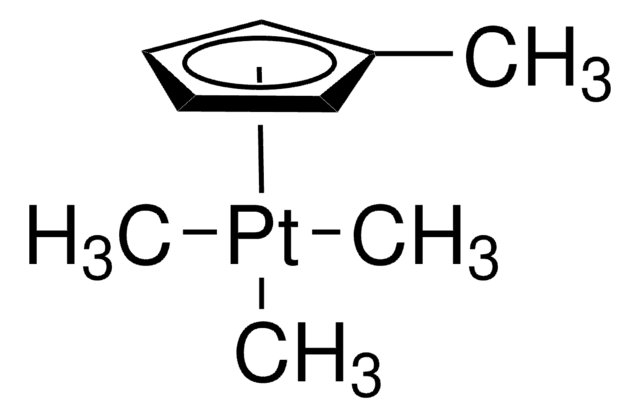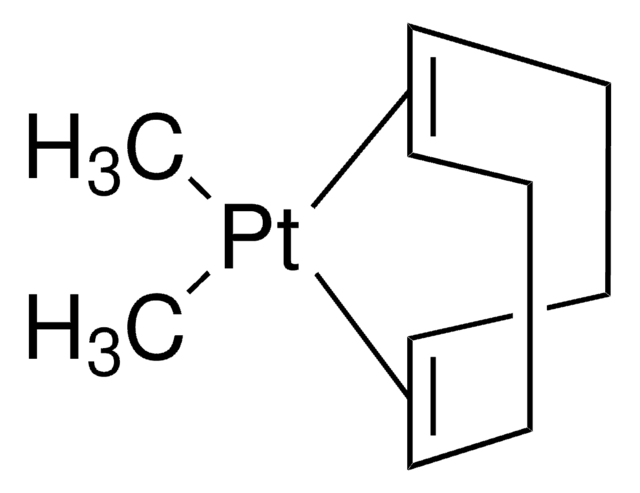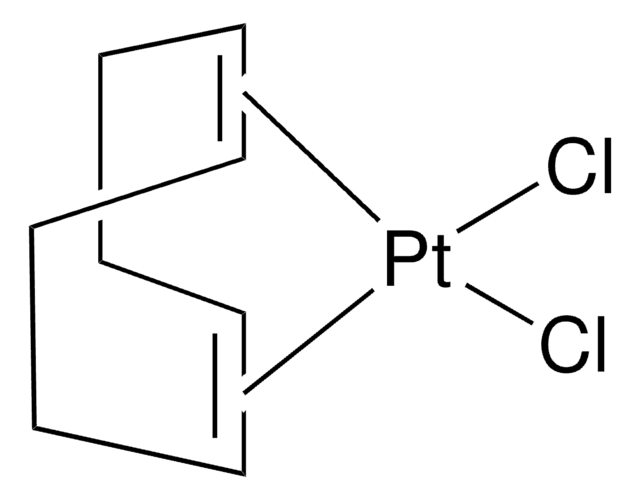523038
Platinum(II) acetylacetonate
≥99.98% trace metals basis
Synonym(s):
2,4-Pentanedione platinum(II) derivative, Pt(acac)2
About This Item
Recommended Products
Assay
≥99.98% trace metals basis
form
solid
reaction suitability
core: platinum
mp
249-252 °C (lit.)
SMILES string
CC(=O)\C=C(\C)O[Pt]O\C(C)=C/C(C)=O
InChI
1S/2C5H8O2.Pt/c2*1-4(6)3-5(2)7;/h2*3,6H,1-2H3;/q;;+2/p-2/b2*4-3-;
InChI key
KLFRPGNCEJNEKU-FDGPNNRMSA-L
Looking for similar products? Visit Product Comparison Guide
General description
Application
- Pt−Co octahedral nanocrystals, which are used to improve catalytic activity and durability in the oxygen reduction reaction (ORR) in fuel cells.
- PtW@WO3 NPs via thermal decomposition method, serving as efficient catalysts for the hydrogen evolution reaction (HER).
- Monodisperse Pt–Fe nanoparticles, which exhibit high durability for proton exchange membrane fuel cells and provide active and durable low-Pt electrocatalysts for electrochemical devices.
Features and Benefits
- High Purity: Reduces contamination risk, ensuring reliable performance in applications.
- Thermal Stability: Maintains activity at elevated temperatures, enhancing product lifespan and efficiency.
- Soluble in acetone
- Elemental Carbon is >29.5% and Platinum presents >47.9%
Signal Word
Warning
Hazard Statements
Precautionary Statements
Hazard Classifications
Acute Tox. 4 Dermal - Acute Tox. 4 Inhalation - Acute Tox. 4 Oral - Eye Irrit. 2 - Repr. 2 - Skin Irrit. 2 - STOT SE 3
Target Organs
Respiratory system
Storage Class Code
11 - Combustible Solids
WGK
WGK 3
Flash Point(F)
Not applicable
Flash Point(C)
Not applicable
Personal Protective Equipment
Choose from one of the most recent versions:
Already Own This Product?
Find documentation for the products that you have recently purchased in the Document Library.
Customers Also Viewed
Our team of scientists has experience in all areas of research including Life Science, Material Science, Chemical Synthesis, Chromatography, Analytical and many others.
Contact Technical Service
















